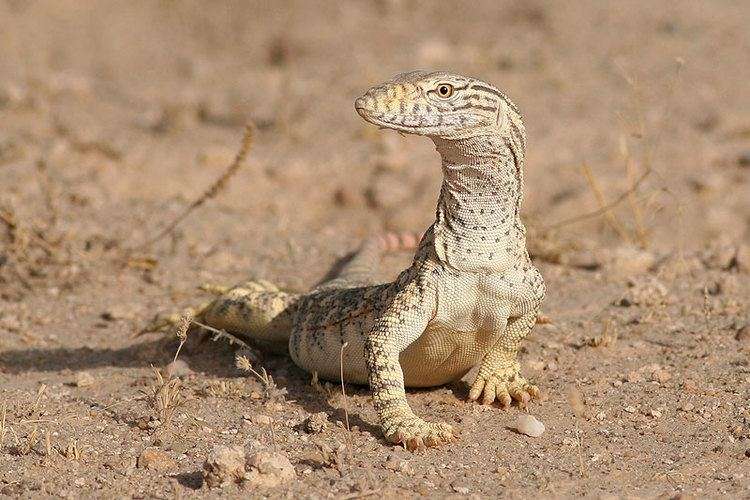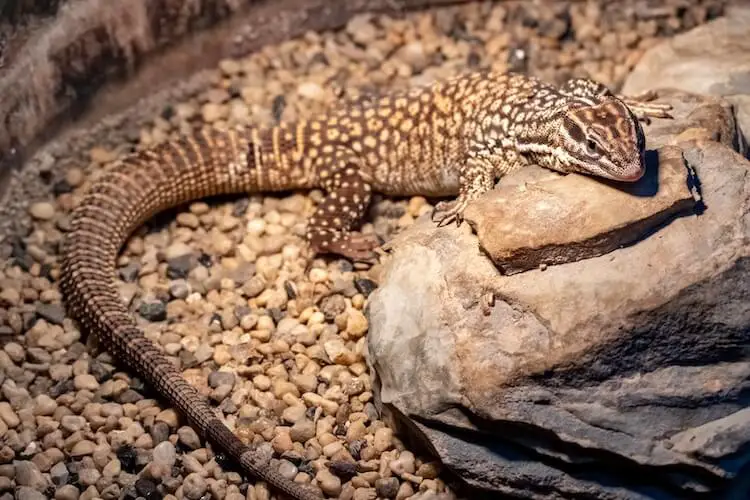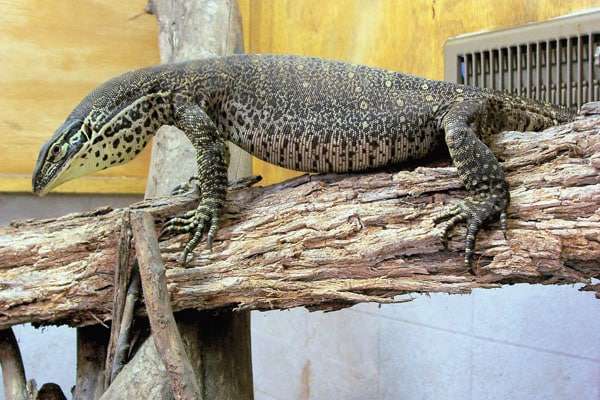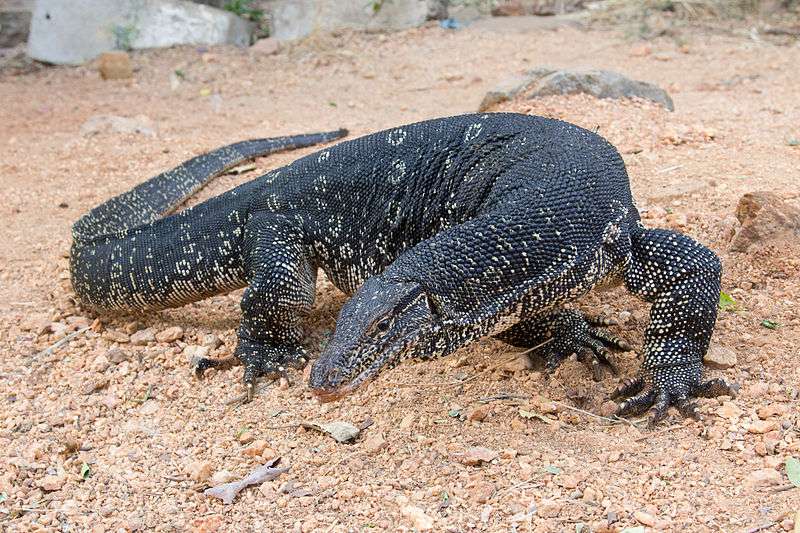
Description
Scientific name: Varanus griseus
Life span: more than 17 years
The Desert monitor lizards have body colors that vary from light brown and yellow-gray. They may grow to about 2m of their total body length although their normal length is around 1m. Desert lizards have yellow spots on its back with horizontally arranged dark bands on its tail and back. Juveniles of these monitors are bright orange in color with dark bands on its back. these bands can be lost with their maturity. Male individuals of desert monitors tend to be bigger and more powerful than females.
Native Region/Habitat
The desert monitor lizard is native to North Africa and Central and South Asia.

Behavior
Desert monitor lizards are either solitary or live in groups. They have extensive home ranges and can forage as far as two 2-3 kilometers from their burrows. Males govern wider territory than females do. Males vary their home ranges every year. Females could stick to the same territory for several years whereas males switch their territory every year. They hibernate in burrows and tunnels for many months (November-March). During a harsh summer day, they spend most of their day in burrows and tunnels. They feed on eggs, small rodents, fish, amphibians, small mammals, and insects. During the breeding season, they lay eggs in burrows. After incubation of 8 to 12 weeks hatchlings will appear.
Care As a pet/In captivity
Desert monitors seldom thrive in captivity and, at best, barely survive a few years. The Desert monitor lizards have been known to survive 17-18 years on rare occasions when their specific needs can be addressed, but they do not become docile or used to being handled. Their surroundings in captivity should resemble both their original desert habitat and those of many other ground-dwelling creatures. For hibernation, they need cooler temperatures during the winter season and higher temperatures in the summer. They need proper food in captivity comparable to their food in the wild.
Table





